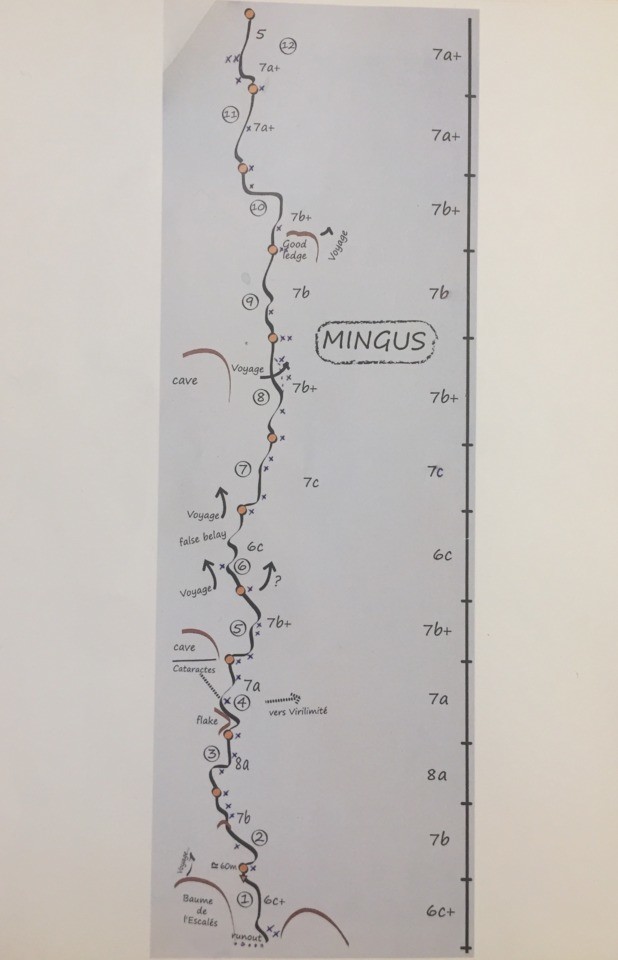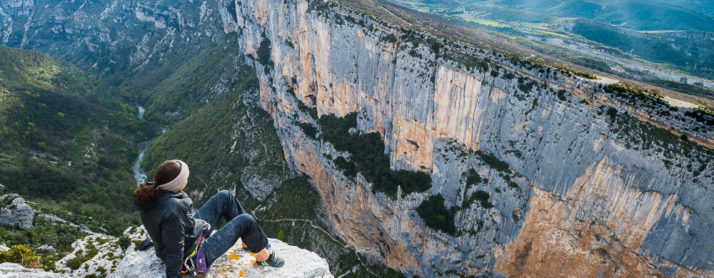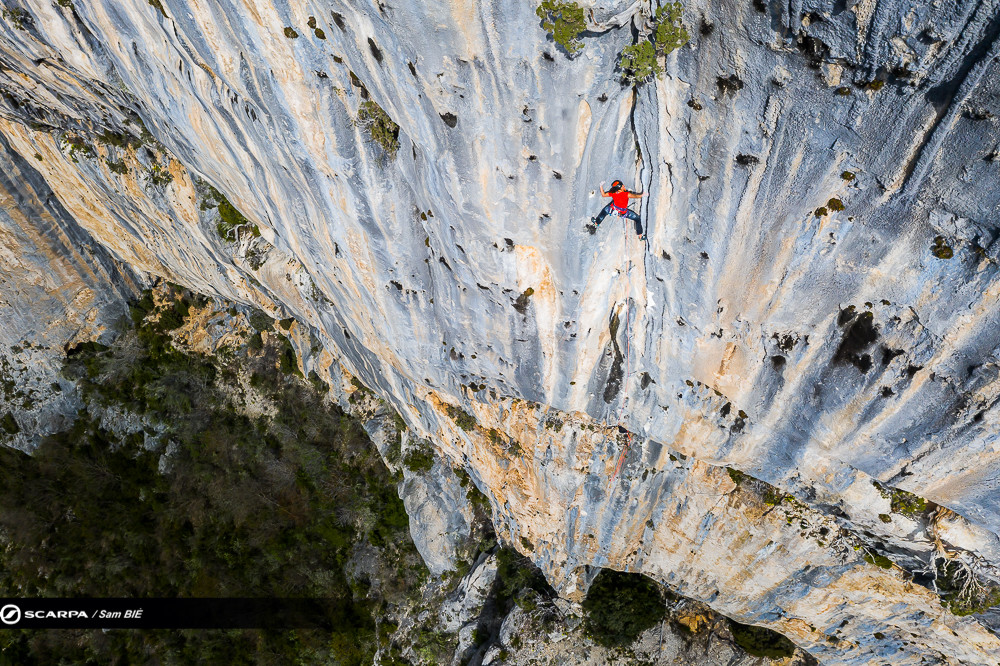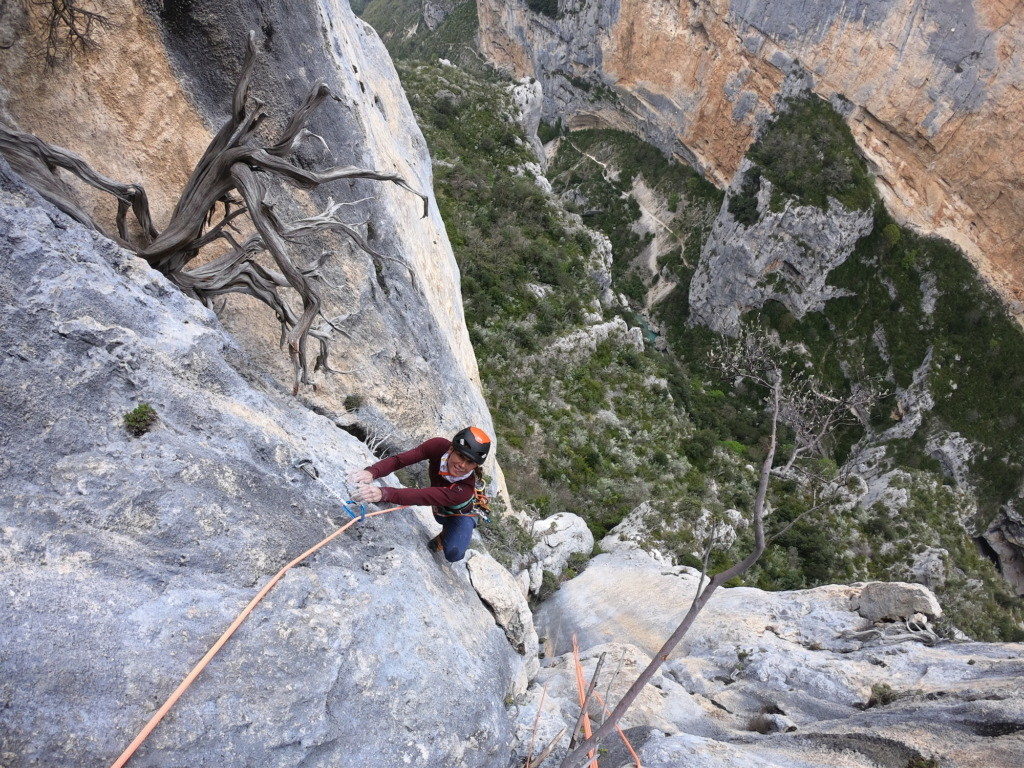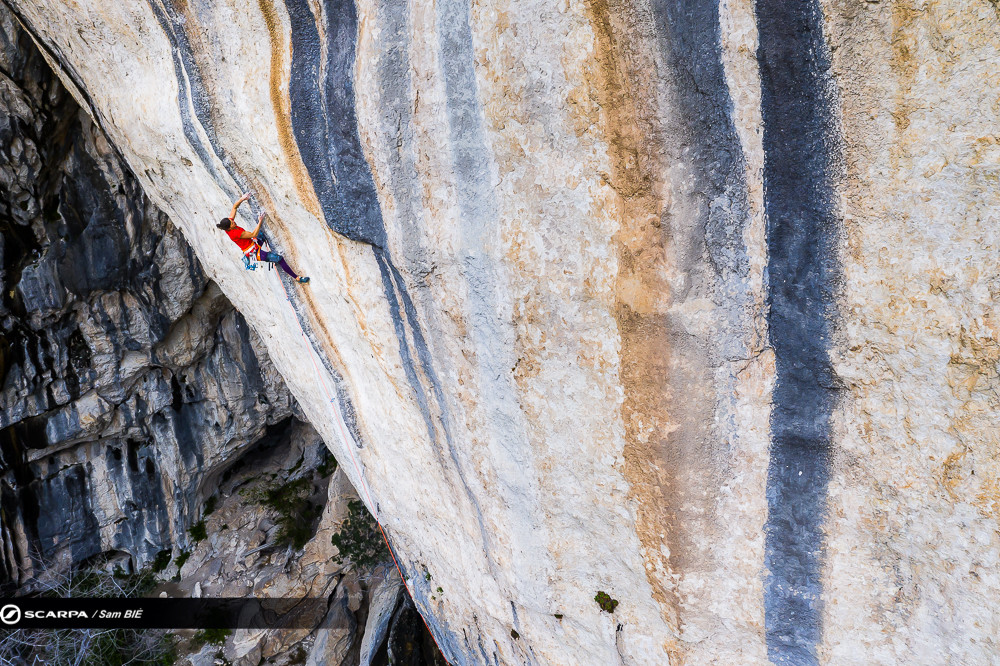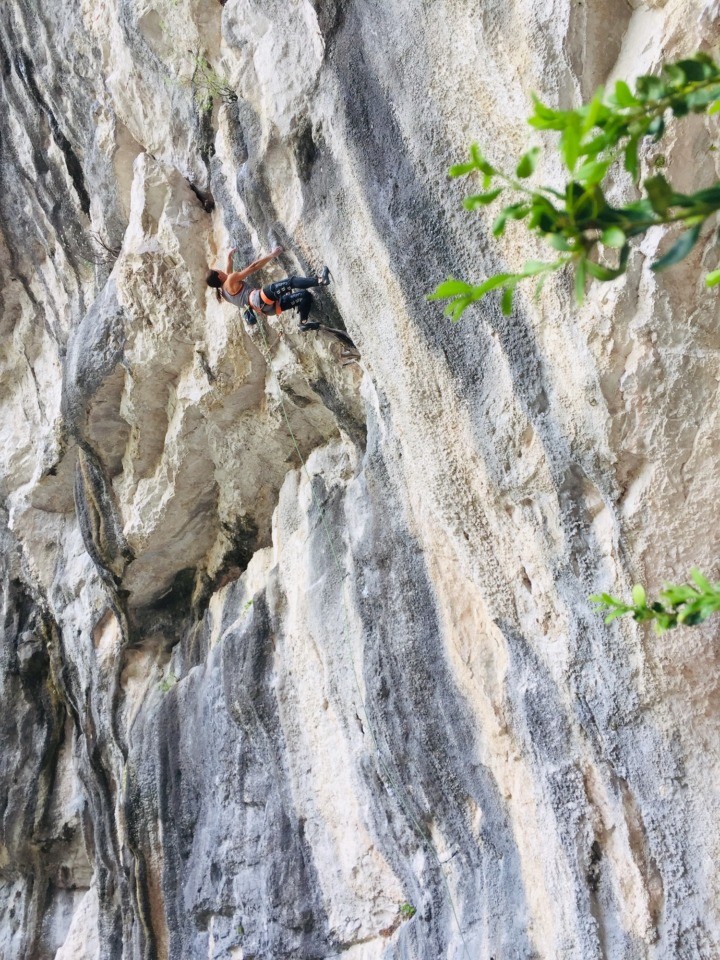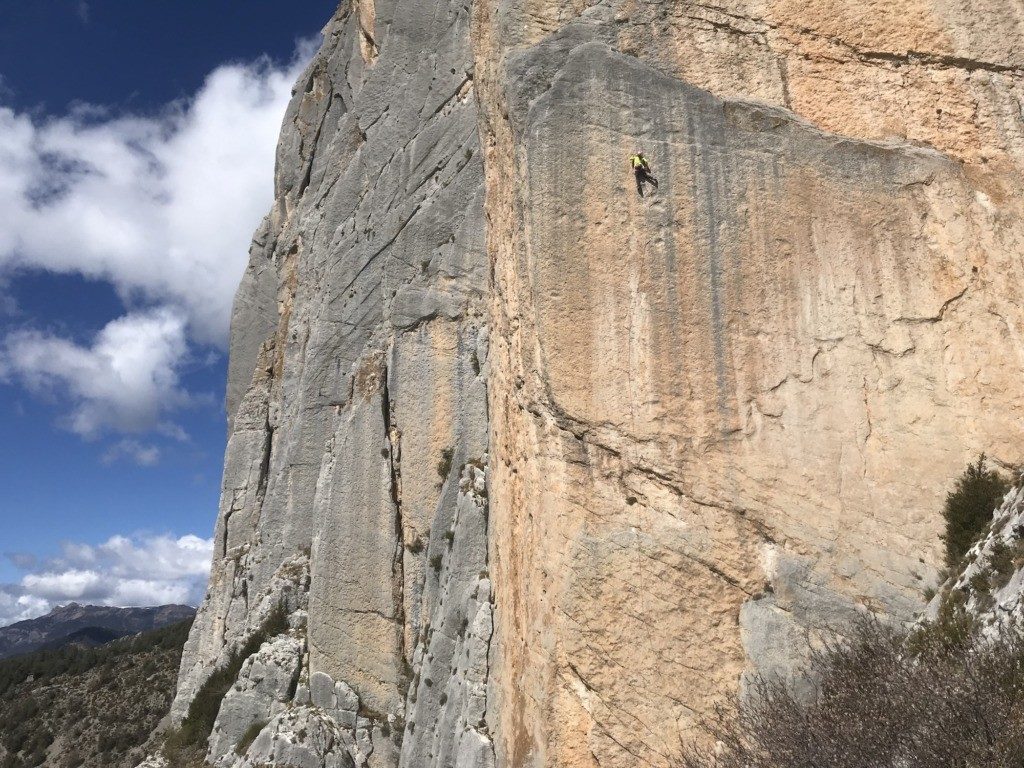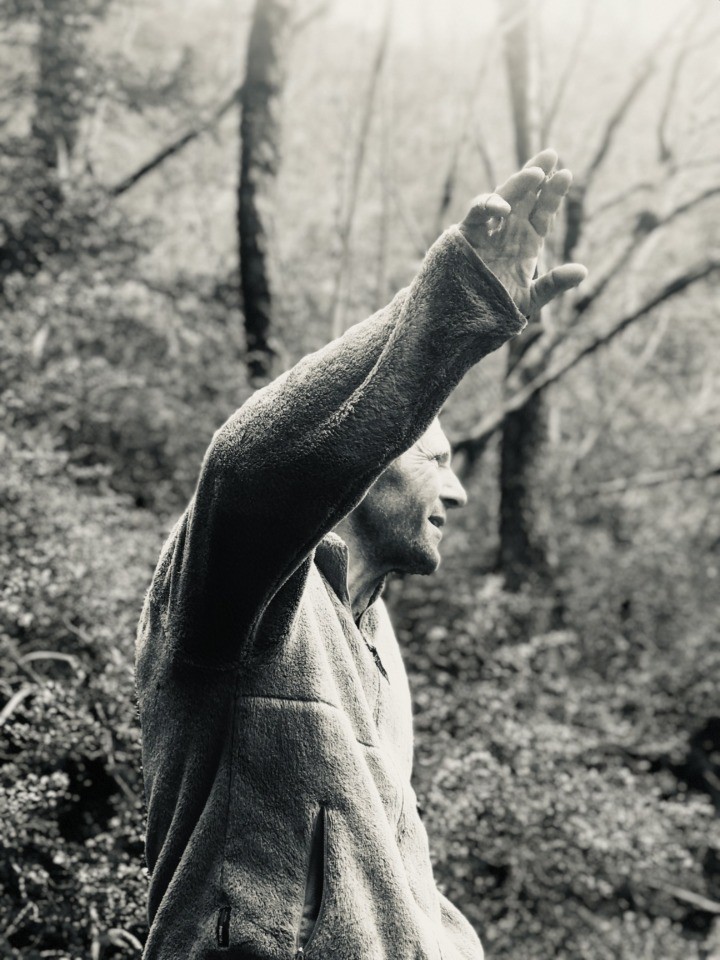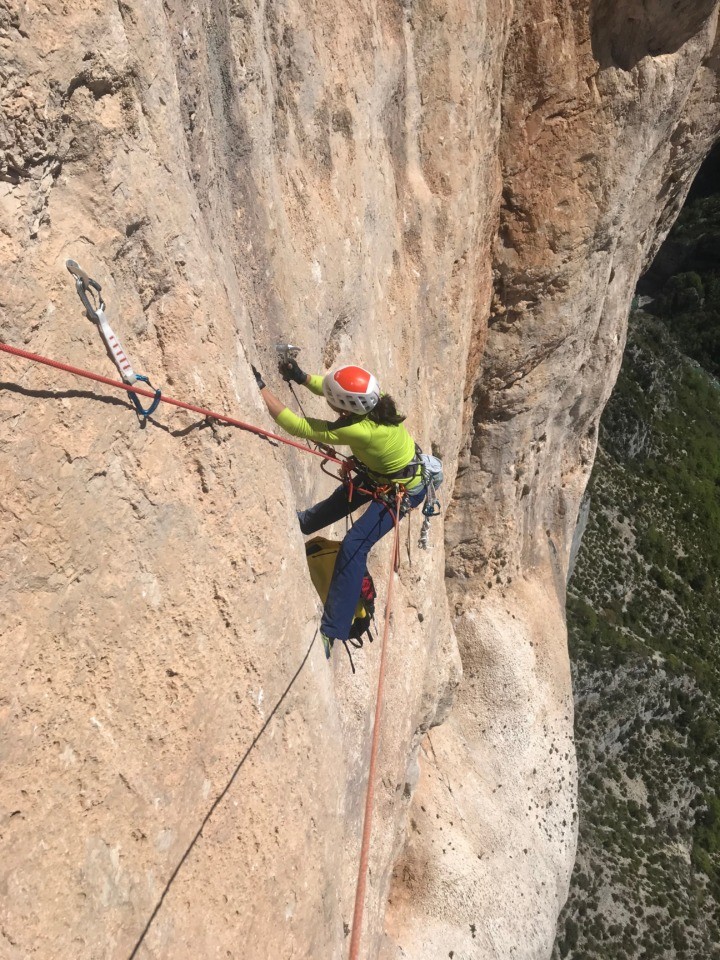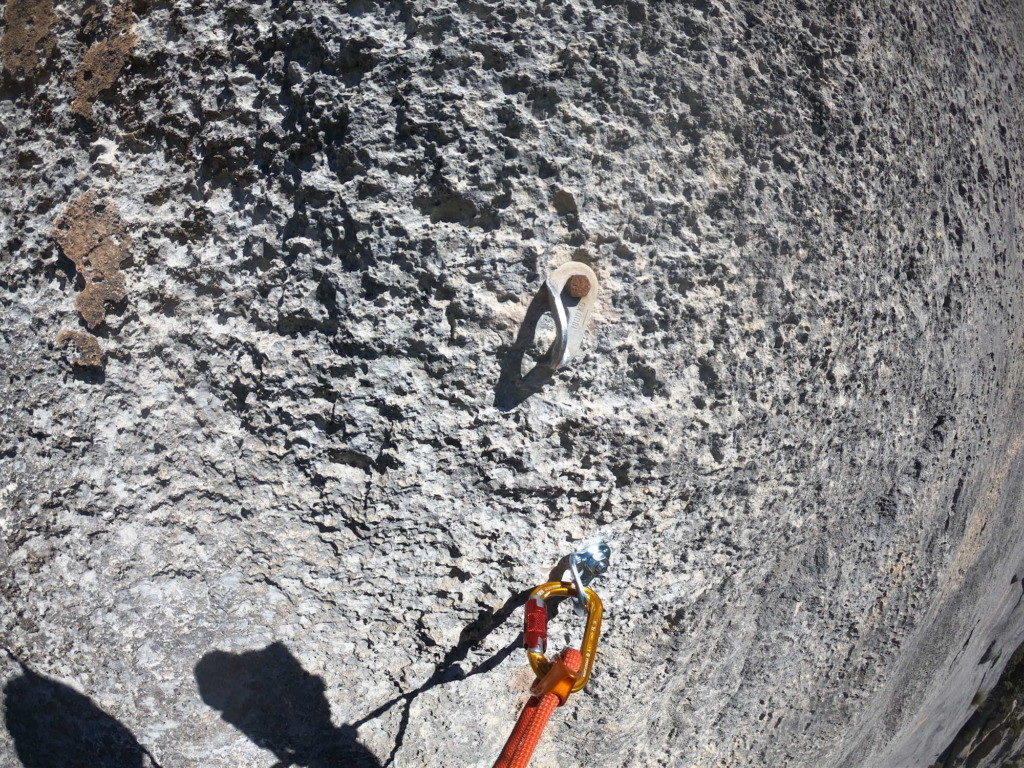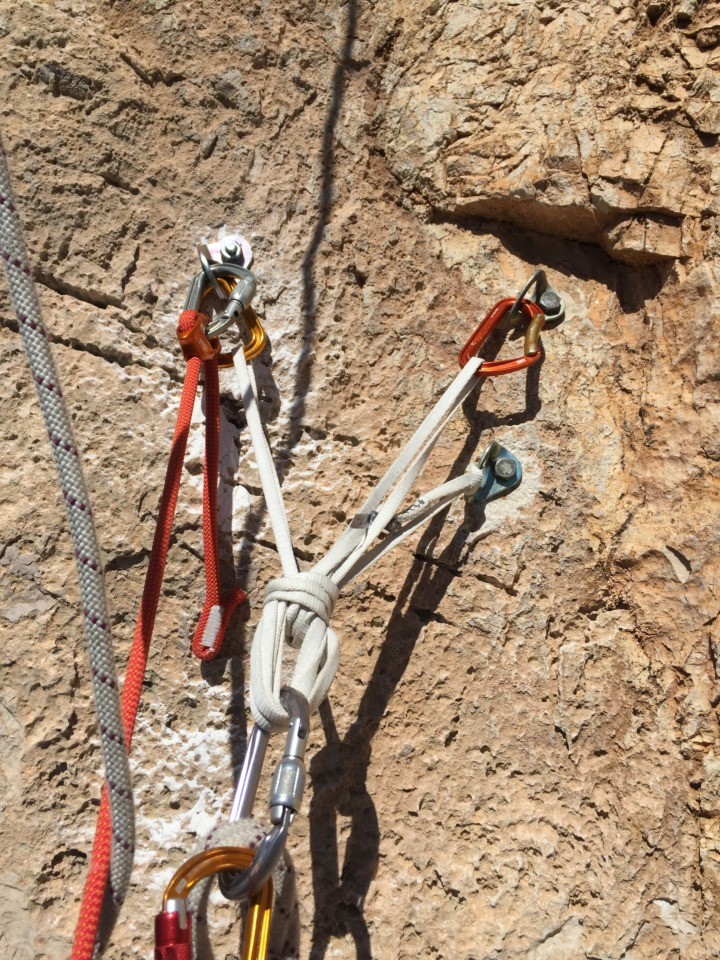I had a pleasant time this spring climbing in one of my favorite places on earth: the Verdon gorge.
This place has something very true to me; it somehow brings together certain types of people. Some are climbers, some are goat farmers, some are gypsies and some are just tourists visiting “la route des crêtes”.
Seeing those walls all over brings up much indecision and often you don’t know with which route to start! As I’ve been climbing regularly in the gorge over the last 10 years, I am finally slowly getting the feeling for choosing the right wall at the right moment.
Also, it’s always very refreshing to exchange some words with Bruno Clement. He’s the one who’s been putting bolts since pretty much ever. And he always has some new pearls to offer. Some of those recently opened climbs are close to the famous “Tom et je ris” (This one has two additional new pitches btw).
This wall has always been one of my favorites because it’s the most obvious and you can see it across the canyon when you stop at the first belvedere of Escales.
Together with my friend Ann Raber from California, we climbed two new routes of Graou on that wall. The first is called “je vous salue Barri” (5 pitches up to 7c, dihedral and jamming style), situated to the very left of the wall. And the other one called “Panetonne je ris” (7c+, 8a+, 7a+) is an outstanding tufa line 200m to the right of Tom et je ris. Both of the routes are going to be published in the next edition of the Verdon guidebook. Stay tuned!
Besides new lines, Verdon has hundreds of old routes to offer! I took advantage of the colder spring temps and climbed some classics on Escales like “Séance tenante” a single pitch 8a from 1987 or “prise de cent”, a fantastic 7a+ multipitch on water drops.
I also spent some days cragging at “Hulkosaure” and “Teillon”, both very impressive walls offering a complete different type of climbing.
As so often when I live climbing at its most sincere and simple state, routes are calling me. And so did Mingus. It’s a funny story: One night at the “La Palud gypsy camp” I ran into my ex boyfriend Benoit and his partner Leo. They climbed Mingus together two days before in a mix style of free- and aid-climbing. As I know Benoit really well, I could tell that this route meant something to him and as they both talked about that historic route with their eyes bright as the sun, a big excitement overcame me.
And so I started to have look up Mingus in the guidebook and it’s true, it’s the only route that has an entire page by itself and the introduction has a little eye catcher with my climbing partner Lynn Hill saying:
I got very excited about the idea of free climbing this route and so I talked to Graou about it while eating some mushrooms and showering at this place. He recommended re-bolting the route first in order to stay alive and so I did. Ann, my partner, was in without hesitation and equipped with Graou’s power-drill and some bolts we found in la Palud, we started our mission the day after.
Rebolting such a historical route is a delicate affair. To be honest, I did not ask all the climbers whether they agreed or disagreed, I simply went for it after checking with Graou, Greg and Pascal, people who live and bolt a lot in La Palud. It has been very important to do my best doing a good job and preserving the spirit of the route. My simple goal from the beginning was to make the route safe by adding a 10mm bolt at each belay station and by replacing one to three bolt per pitch where the chance to falling and breaking one of those very old and rusty bolts is high, especially where such a fall could have a bad ending. All the pitons look very good and overall, that 300 meter long itinerary has a logical sense. There is only one confusing spot at pitch 8 where another route crosses into and where obviously, a belay station has been missing in Mingus.
It took us three days, starting from the top and working on four pitches per day. I first fixed a static rope and drilled the anchor. Then I rappelled down, climbed the route top rope and replaced the most obvious bolts. Ann’s job was taking out the old bolts I replaced and offering a hand whenever needed. Then we both climbed the pitches we’ve been working on ground up. It’s always something different when you climb at the sharp end and it allowes me to see if we took the right decisions. The exchange with Ann has been essentially and I think that we did a good job. I’m very glad that we made it work because it has been so much fun!
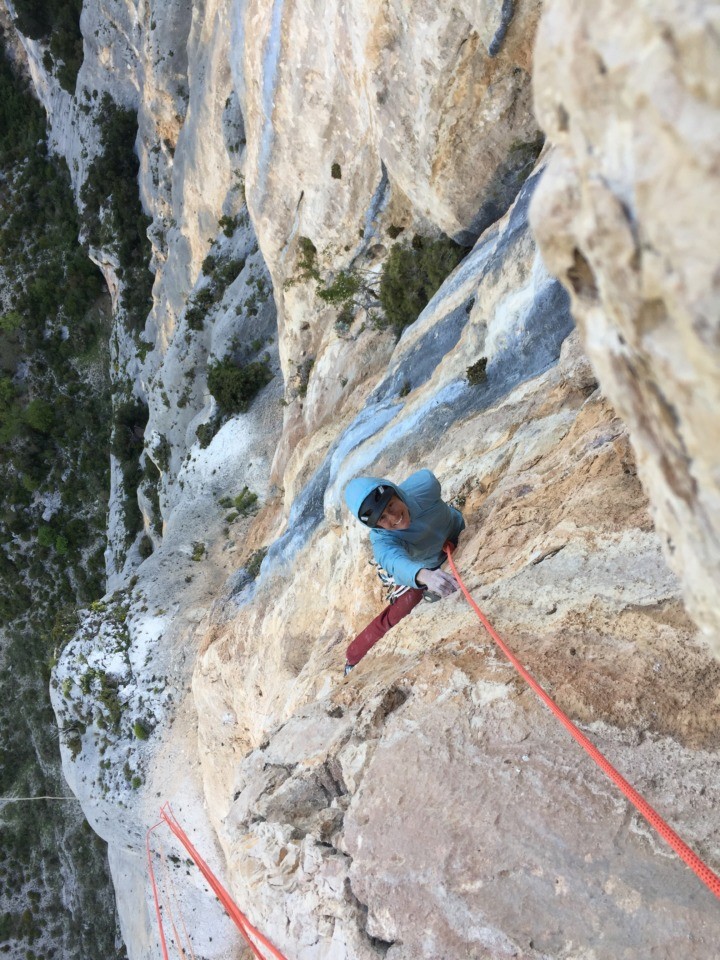
Once we did the job, we took out all our heard gear. The next day, Ann had to leave. I was lucky to find a partner who was willing to try the route ground up with me.
After a rainy restday, Sam and I left early in order to have plenty of time to climb Mingus. I had no expectations that day, my simple goal was to have fun and to see if Ann and I did a good job rebolting. But once I freeclimbed the first two pitches, this pleasant game of “sending”overcame me and so the button of determination turned on!
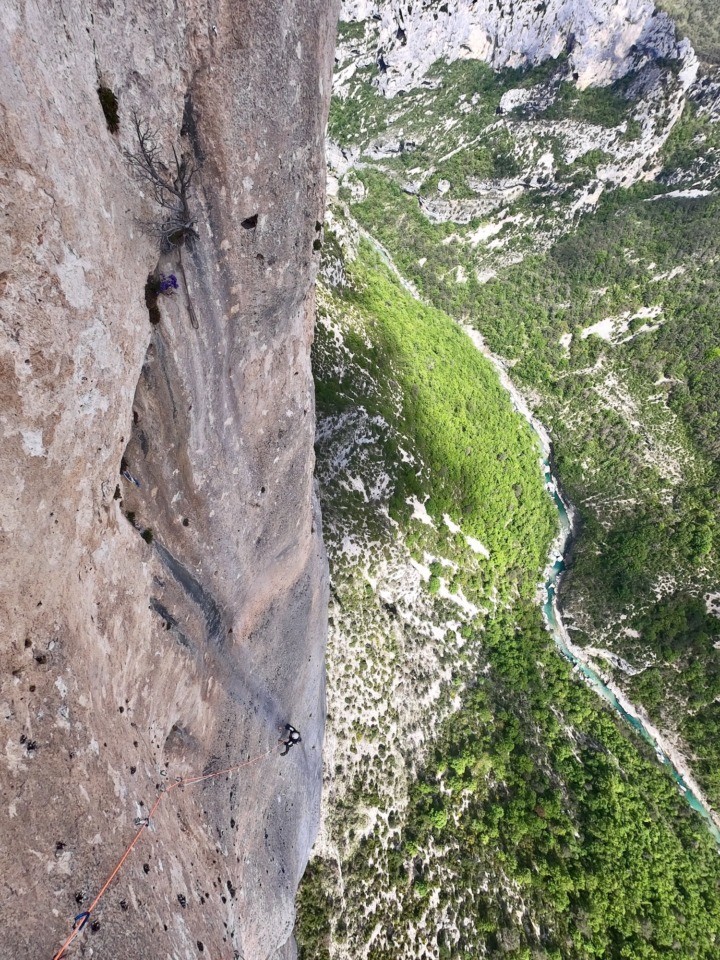
I sent the 8a on my second go (luckily because it’s a real skin killer), but the rest went well on my first go. Some of the pitches I knew well, others less and allover I had a good portion of luck!
Gypsy friend Gio joined us from the top and took some pictures while Sam and I climbed on the last pitches. What a rewarding sensation freeing this historical route with all the support of those adorable humans. Verdon reunites and connects a certain type of people and I feel very honored to be part of that special community.
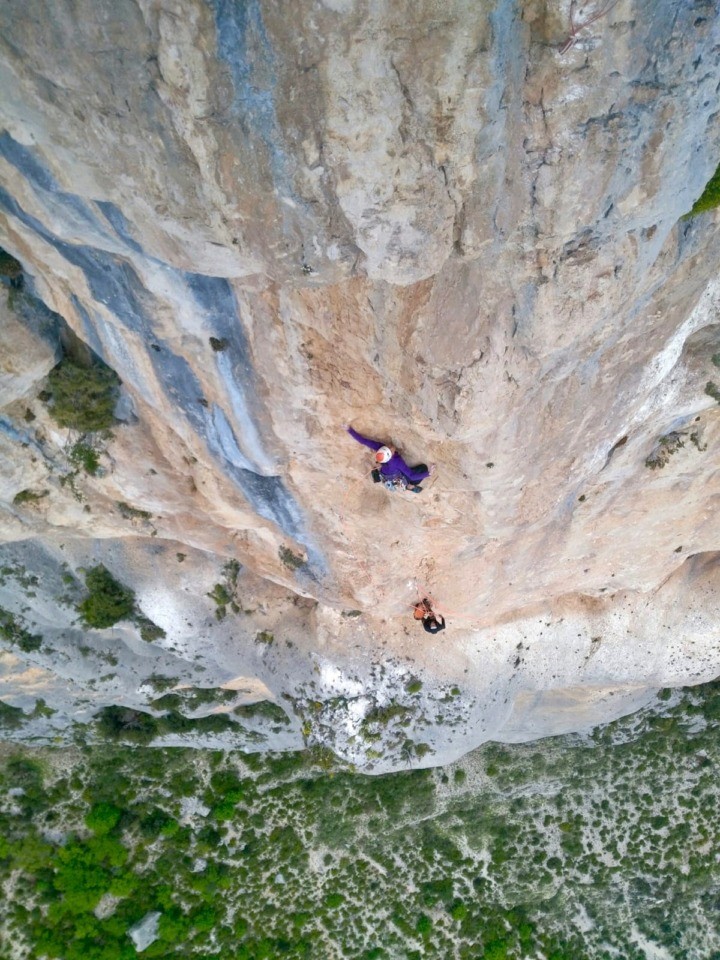
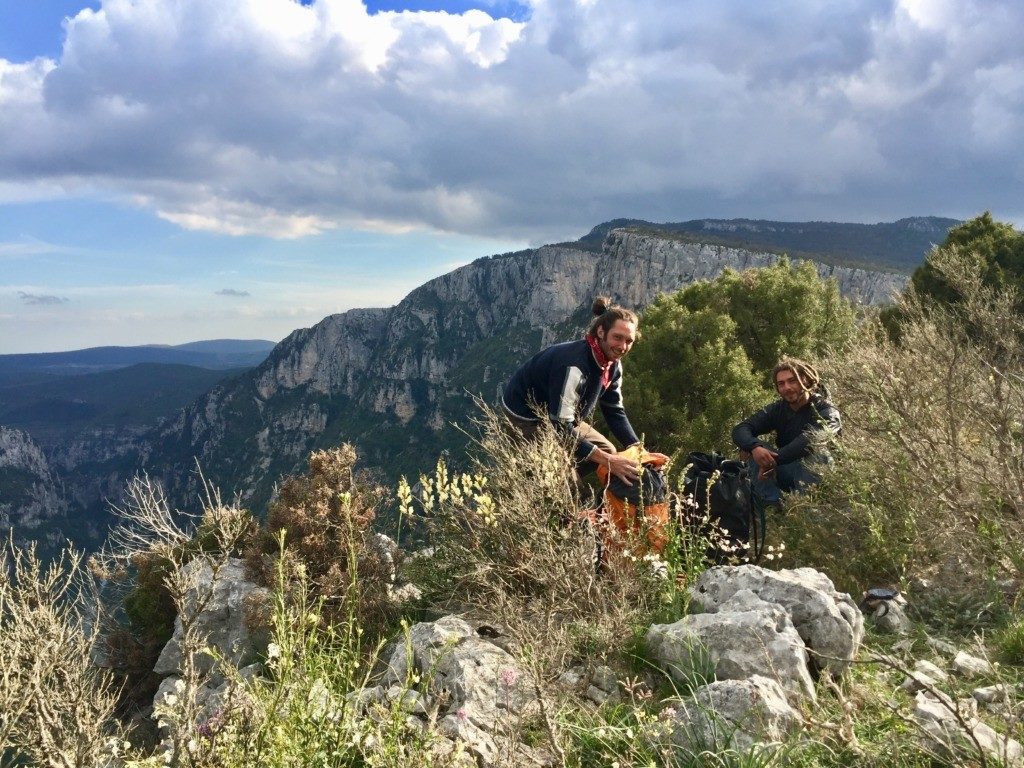
So now I hope that you will get excited from this blog post and that Mingus will see many attempts in the future. It’s totally worth the trip and the fight! Hats down once more to Lynn Hill, who climbed the route on sight in 1994.
A huge thanks to Ann Raber who climbed with me almost all spring and who was such a great support all long. Nowhere more than during that rebolt mission. And thanks Sam for the perfect climbing day and high psyche during my free ascent on my very last day in the Verdon. And of course, thanks to Graou for lending his dear baby called “Drill Machine”.
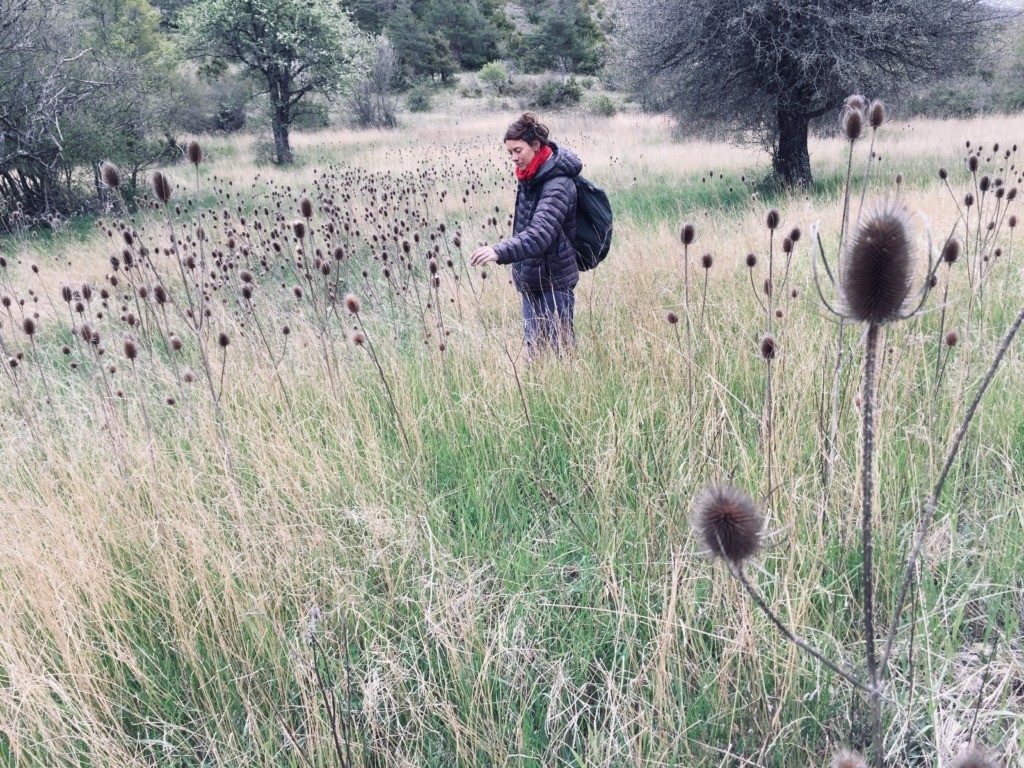
MINGUS 300m/8a
pitch 1: 6c+
Once you survive the 2+ traverse from Baume de l’Escales, you’re happy to clip two new bolts to keep yourself alive while starting the route. By far the loosest pitch of the route. Climbing up on crazy pockets in poor rock. Bolts are good.
pitch 2: 7b
Fantastic start, left traverse in grey rock leading to a slab where you have to climb on it’s right and then traverse left towards the boulder problem. I replaced the bolt there slightly to the right, so it makes it more logic trying the boulder.
pitch 3: 8a
Climbing up and then undercling traverse to the right leading to the first hard move. Replaced a bolt at that spot. Then continuously hard climbing on cauliflower holds. Requires some fresh temps, stiff shoes and a good portion of skin.
pitch 4: 7a
Great Verdon water drop traverse to the left, then I replaced a bolt leaving the ramp. Climbing somehow straight up on poor rock. Scary. I replaced one bolt on a very loose spot.
pitch 5: 7b+
Starts in the same poor rock as the previous. Then great boulder problem on grey rock! I replaced two bolts at a slightly different spot, but left one of the old ones for aid climbers.
pitch 6: 6c
Amazing climbing with a touch of alpine style. Good pitons.
pitch 7: 7c
Great climbing in typical grey Verdon rock. Vertical climbing on good pockets for the first half, then the wall becomes slabby and the holds very small. Hard on feet.
pitch 8: 7b+
Great start leading up towards another line crossing in from the left. Don’t use the first weird anchor and continue straight up on the new bolt. Clip the sling to avoid rope traction and cross left again toward the other new bolt leading up to the anchor 10 meters above. That has been the only spot where I (and other climbers) has been confused about the line. The original line takes you out left to loose flakes and almost impossible free climb. So I used the logical itinerary which included adding two bolt to the right. Also I had to bolt an anchor which had been missing (maybe a bolt came out in the past).
pitch 9: 7b
Splendid and spicy pitch on pockets in grey rock leading to the belay on a big ledge.
pitch 10: 7b+
A real tough one to finish the series of 7b+. Hard and slippery rock to start, I replaced two bolts to avoid a bad ground fall to the ledge. Then technical traverse to the left and technical boulder problem at the end.
pitch 11: 7a+
A simple beauty taking you straight up to a belay underneath the roof.
pitch 12: 7a+
It’s easy to skip the previous belay and to make one long pitch by clipping a long sling on the anchor. Big undercling move to reach good crimps on a little stripe. Linking this roof section towards the good belay station 15 meters above. Maybe harder for the second climber.
From the last belay it’s a 3+ bush scrambling to the top. Good bolt at the end.
